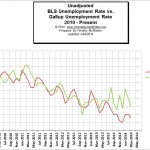
| Adjusted | Unadjusted | |
| BLS | 6.7% | 6.8% |
| Gallup | 7.4% | 7.5% |
| Difference | 0.7% | 0.7% |
Current U.S. Unemployment Rate
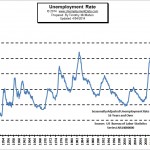
March Employment Changes
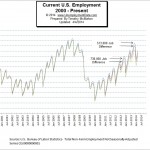
The health care sector added another 19,000 jobs, mining and logging accounted for 7,000 jobs with food services accounting for an additional 30,000 jobs and construction employment added another 19,000 jobs. So of the 183,000 jobs added how many were minimum wage? Temporary help? Food Services? and at least a portion of the construction, mining and logging workers. Read more …
Current Employment vs Unemployment Chart
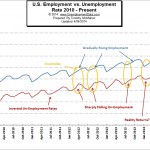
This month it looks like the disagreement that we have been noting for months is starting to correct as we see employment rising while unemployment is flat. In this case, a cynical person might say that the BLS is trying to make up for previous fudging and get the unemployment numbers back on track. Read more …
Employment Levels During Recessions
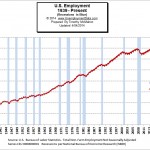
The Misery Index
The misery index is a combination of both inflation and unemployment to determine how miserable life for the average citizen is. It was originally developed in the 1960’s and has been used as a political football in a variety of presidential elections since. Misery Index chart is published by InflationData and includes the inflation rate, unemployment rate, misery index number, president and political party. See: InflationData’s Misery Index.
See Also:
